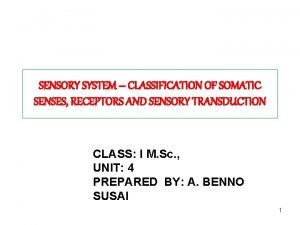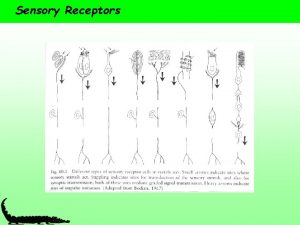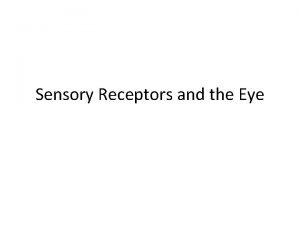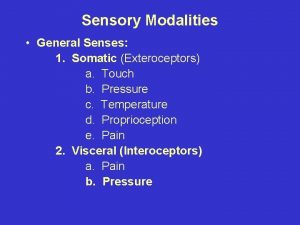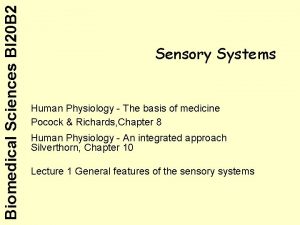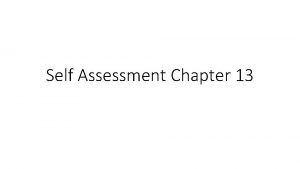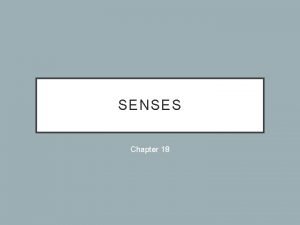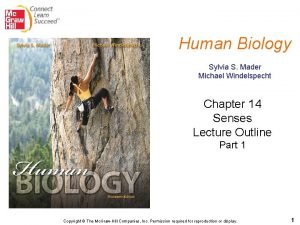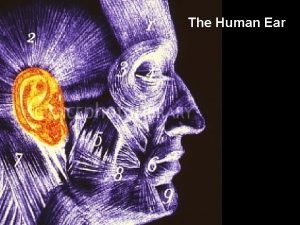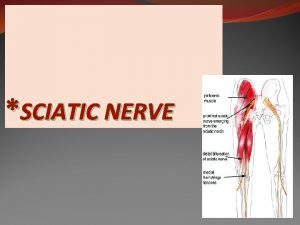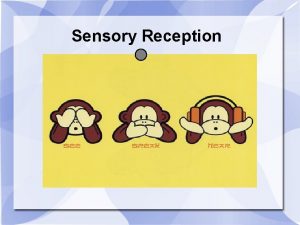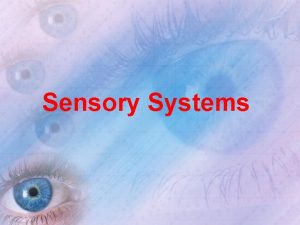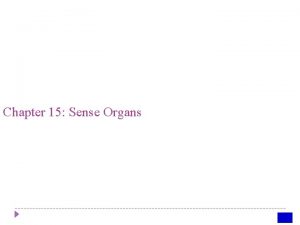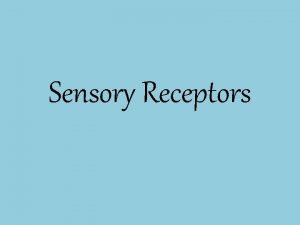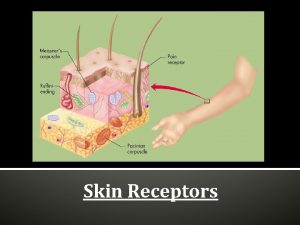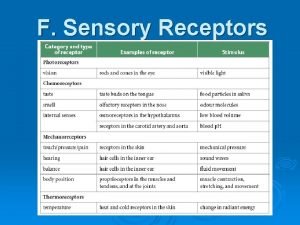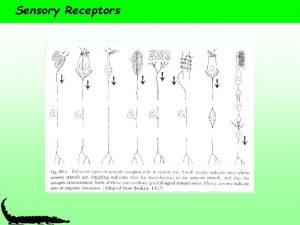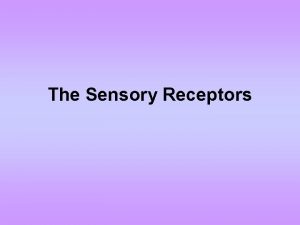Sensory Reception How you sense Sensory Receptors nerve












- Slides: 12

Sensory Reception

How you sense. Sensory Receptors – nerve endings that gather sensory information Sensation – when neural impulses arrive at cerebral cortex Perception – how cerebral cortex interprets the sensory information.

Sensory Adapation • Large amounts of sensory information is being sent to the brain • The brain filters out insignificant information this is called SENSORY ADAPATION. • Example: – You brain telling you that there is pressure on your feet from the ground. – Your brain telling you that the room temperature is cool or warm.

Receptors ● Four types − Photoreceptors – react to light − Chemoreceptors – chemical reactions − Mechanoreceptors – physical contact − Thermoreceptors temperature

Eye Structure

External Layer

Eye Protection ● Conjunctiva − ● Fat Deposits − ● membrane lining the inside of eyelids and across the front of the eye. Prevents objects from moving behind the eye. Cushioning the eye during impacts. Sclera − Strong outer membrane. Gives shape to eye, and helps with accommodation.

Intermediate Layer ● ● Choroid – absorbs scatter light, inludes blood vessels (food) Iris – regulates amount of light entering Pupil – opening of light Ciliary muscles – change shape of lens to focus

Nourishment ● Fat Deposits − ● a close energy source Choroid layer − enriched with blood vessels. Brings in nutrients and removes wastes.

Nourishment (cont. ) ● Posterior Chamber filled with Vitreous Humour − ● Pores in the ciliary muscles − ● brings nutrients to the lens. allow nutrients to diffuse from the posterior to the anterior chamber. Anterior Chamber filled with Aqueous Humour − brings nutrients to the cornea and the front of the lens.

Internal Layer ● ● ● Rods – light receptors Cones – color receptors Fovea centrailis – high density of cones, provides acute vision

Other Noteable Stuctures ● ● Lens – focuses light Humours -support eyeball with pressure of fluids Optic nerve – transmitter to brain Optic disc – blind spot, where nerve connets with eye
 Classification of sensory receptors
Classification of sensory receptors Tonic receptors
Tonic receptors Classification of sensory receptors
Classification of sensory receptors Sensory receptors in eye
Sensory receptors in eye Exteroceptors examples
Exteroceptors examples Classification of sensory receptors
Classification of sensory receptors Dermatome
Dermatome Sensory receptors
Sensory receptors Proprioceptors
Proprioceptors Names of parts of ear
Names of parts of ear Dominant genetic variance
Dominant genetic variance Narrow sense heritability vs broad sense heritability
Narrow sense heritability vs broad sense heritability Branches of sciatic nerve
Branches of sciatic nerve
